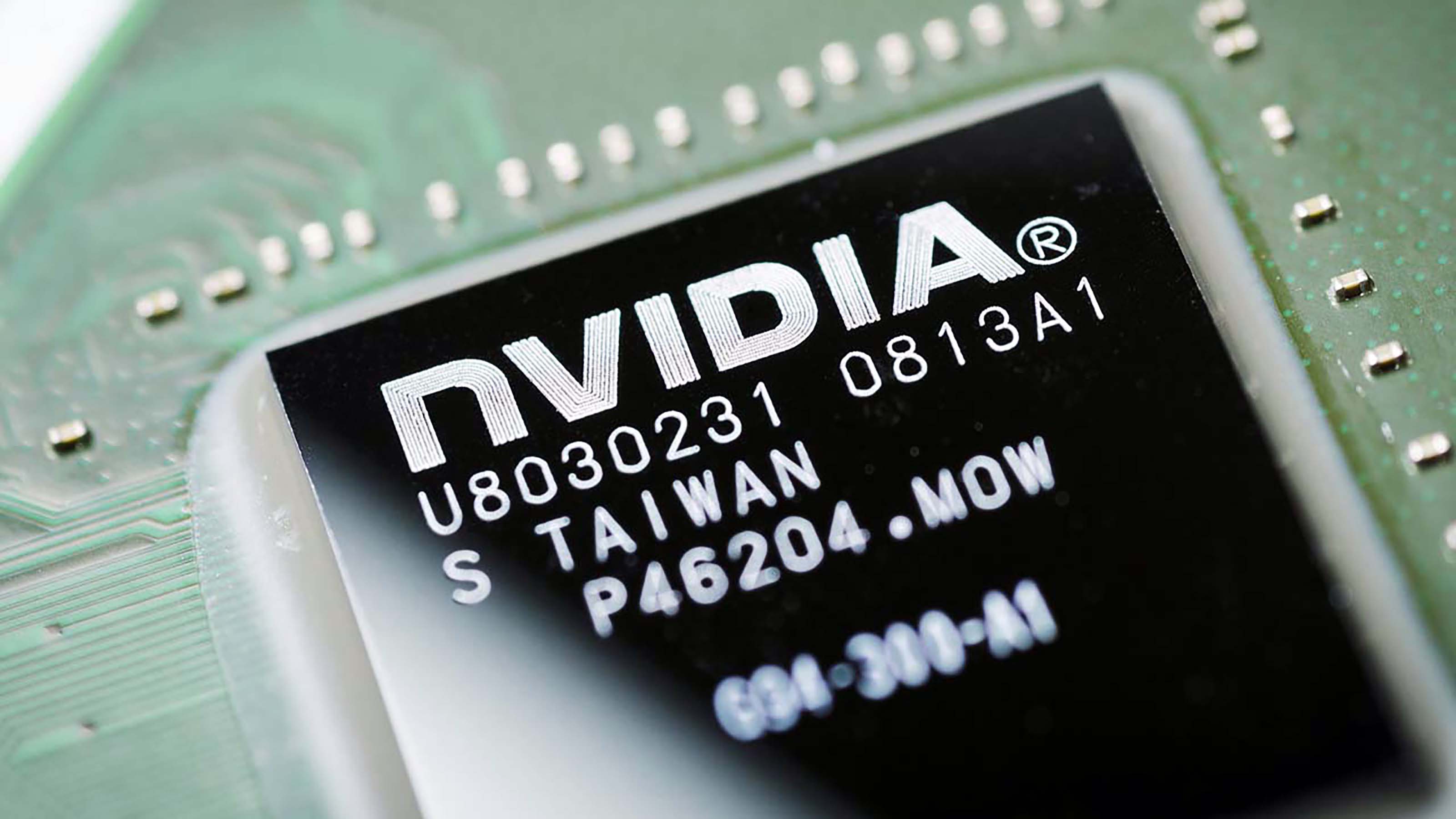Is Nvidia Stock on Sale?
NVDA stock is a screaming bargain by some relative valuation metrics.


Analysts have been busy updating their discounted cash flow models and price targets for Nvidia (NVDA) after the most important AI company in the world failed to give the sort of blow-out revenue guidance Wall Street has come to expect.
Indeed, shares in NVDA, the world's second most valuable publicly traded company with a market cap in excess of $3 trillion, actually stumbled after posting Q3 results.
But then these sorts of things can happen when a stock is said to be priced for perfection.
From just $107.88 $24.99 for Kiplinger Personal Finance
Become a smarter, better informed investor. Subscribe from just $107.88 $24.99, plus get up to 4 Special Issues

Sign up for Kiplinger’s Free Newsletters
Profit and prosper with the best of expert advice on investing, taxes, retirement, personal finance and more - straight to your e-mail.
Profit and prosper with the best of expert advice - straight to your e-mail.
Either way, it seemed like a good time to take a look at a few of the ways in which analysts' expectations have changed for NVDA stock in light of the company's latest guidance.
First, let's have a look at NVDA's price target. Although these targets are of limited utility, they do form the basis for declaring whether a stock is a Buy, Hold or Sell.
As of now, NVDA's average price target stands at about $170, up roughly 6% from the pre-earnings release target of about $160, according to data from S&P Global Market Intelligence.
NVDA's new average price target gives shares implied upside of about 20% over the next 12 months. The old price target – based off NVDA's previous level – gave the stock implied upside of about 13%.
It's hard to believe Nvidia has become a $3 trillion company because of its potential for 13% or 20% price upside over the next year or so. Heck, the stock nearly tripled over the past 52 weeks.
Price targets. Go figure.
Perhaps relative valuation can be more helpful.
Nvidia is cheap, relatively speaking
First, a caveat about valuation. While absolutely critical, valuation tends to play out on its own time frame. This time frame can be much longer than investors expect. Keep this in mind when looking at Nvidia, as the stock usually looks expensive and yet it keeps going up.
That said, NVDA's relative valuation does look increasingly compelling by some measures these days.
For one thing, while it's true that Nvidia changes hands at nearly 35 times analysts' average next-12-months earnings per share (EPS) estimate, this multiple represents a 20% discount to its own five-year average, according to data from LSEG Stock Reports Plus.
Perhaps more importantly, after updating their models, analysts' average long-term growth forecast now stands at more than 62%, per LSEG.
These revisions make NVDA look attractively priced once you consider how fast the stock is rising relative to its growth prospects. Indeed, by at least one metric – the price/earnings-to-growth (PEG) ratio – Nvidia stock looks very cheap on a relative valuation basis.
Here's why: since NVDA stock is trading at 35 times expected earnings and has a LTG forecast of more than 62, its forward PEG is 0.6. To put that in perspective, the S&P 500 trades at a PEG of 2.1.
By this measure, NVDA trades at a 70% discount to the broader market. That's not bad, but then Nvidia and the broader market are sort of apples and oranges.
That's why we want to look at Nvidia's PEG relative to its peers and itself. This gives us an idea of what sort of premium the market has been willing to pay for Nvidia's growth prospects in the past.
And what do we find? Bulls will be happy to know that with a PEG ratio of 0.6, Nvidia stock trades at a 70% discount to the semiconductor industry average.
Even more intriguing, however, is that NVDA stock also trades at a steep discount to its own five-year average. Indeed, per LSEG Stock Reports Plus, if Nvidia's PEG "returned to historical form," the stock would trade at $349.04.
That's not a price target, mind you, it's just some modeling. But it does give NVDA stock implied price upside of about 150% from current levels.
As for Wall Street's collective wisdom on this top-rated Dow Jones stock, of the 63 analysts issuing opinions on NVDA surveyed by S&P Global Market Intelligence, 47 call it a Strong Buy, 12 have it a Buy and four say it's a Hold.
That works out to a consensus recommendation of Strong Buy, making Nvidia one of the Street's top S&P 500 stocks to buy too.
Related Content
- If You'd Put $1,000 Into Nvidia Stock 20 Years Ago, Here's What You'd Have Today
- Nvidia Stock Is Joining the Dow. Is It Time to Buy?
- Best Blue Chip Stocks: 21 Hedge Fund Top Picks
Profit and prosper with the best of Kiplinger's advice on investing, taxes, retirement, personal finance and much more. Delivered daily. Enter your email in the box and click Sign Me Up.

Dan Burrows is Kiplinger's senior investing writer, having joined the publication full time in 2016.
A long-time financial journalist, Dan is a veteran of MarketWatch, CBS MoneyWatch, SmartMoney, InvestorPlace, DailyFinance and other tier 1 national publications. He has written for The Wall Street Journal, Bloomberg and Consumer Reports and his stories have appeared in the New York Daily News, the San Jose Mercury News and Investor's Business Daily, among many other outlets. As a senior writer at AOL's DailyFinance, Dan reported market news from the floor of the New York Stock Exchange.
Once upon a time – before his days as a financial reporter and assistant financial editor at legendary fashion trade paper Women's Wear Daily – Dan worked for Spy magazine, scribbled away at Time Inc. and contributed to Maxim magazine back when lad mags were a thing. He's also written for Esquire magazine's Dubious Achievements Awards.
In his current role at Kiplinger, Dan writes about markets and macroeconomics.
Dan holds a bachelor's degree from Oberlin College and a master's degree from Columbia University.
Disclosure: Dan does not trade individual stocks or securities. He is eternally long the U.S equity market, primarily through tax-advantaged accounts.
-
 Original Medicare vs Medicare Advantage Quiz: Which is Right for You?
Original Medicare vs Medicare Advantage Quiz: Which is Right for You?Quiz Take this quick quiz to discover your "Medicare Personality Type" and learn whether you are a Traditionalist, or a Bundler.
-
 Ask the Editor: Capital Gains and Tax Planning
Ask the Editor: Capital Gains and Tax PlanningAsk the Editor In this week's Ask the Editor Q&A, Joy Taylor answers questions on capital gains tax rates and end-of-year tax planning
-
 Time Is Running Out to Make the Best Tax Moves for 2025
Time Is Running Out to Make the Best Tax Moves for 2025Don't wait until January — investors, including those with a high net worth, can snag big tax savings for 2025 (and 2026) with these strategies.
-
 Time Is Running Out to Make the Best Moves to Save on Your 2025 Taxes
Time Is Running Out to Make the Best Moves to Save on Your 2025 TaxesDon't wait until January — investors, including those with a high net worth, can snag big tax savings for 2025 (and 2026) with these strategies.
-
 4 Smart Ways Retirees Can Give More to Charity, From a Financial Adviser
4 Smart Ways Retirees Can Give More to Charity, From a Financial AdviserFor retirees, tax efficiency and charitable giving should go hand in hand. After all, why not maximize your gifts and minimize the amount that goes to the IRS?
-
 I'm an Insurance Pro: If You Do One Boring Task Before the End of the Year, Make It This One (It Could Save You Thousands)
I'm an Insurance Pro: If You Do One Boring Task Before the End of the Year, Make It This One (It Could Save You Thousands)Who wants to check insurance policies when there's fun to be had? Still, making sure everything is up to date (coverage and deductibles) can save you a ton.
-
 Small Caps Hit a New High on Rate-Cut Hope: Stock Market Today
Small Caps Hit a New High on Rate-Cut Hope: Stock Market TodayOdds for a December rate cut remain high after the latest batch of jobs data, which helped the Russell 2000 outperform today.
-
 What Investors May Face in the New Year: Interview
What Investors May Face in the New Year: InterviewKeith Lerner, the chief market strategist and chief investment officer for Truist Wealth, speaks with Kiplinger.
-
 3 Year-End Tax Strategies for Retirees With $2 Million to $10 Million
3 Year-End Tax Strategies for Retirees With $2 Million to $10 MillionTo avoid the OBBB messing up your whole tax strategy, get your Roth conversions and charitable bunching done by year's end.
-
 'Politics' Is a Dirty Word for Some Financial Advisers: 3 Reasons This Financial Planner Vehemently Disagrees
'Politics' Is a Dirty Word for Some Financial Advisers: 3 Reasons This Financial Planner Vehemently DisagreesYour financial plan should be aligned with your values and your politics. If your adviser refuses to talk about them, it's time to go elsewhere.
-
 For a Move Abroad, Choosing a Fiduciary Financial Planner Who Sees Both Sides of the Border Is Critical
For a Move Abroad, Choosing a Fiduciary Financial Planner Who Sees Both Sides of the Border Is CriticalWorking with a cross-border financial planner is essential to integrate tax, estate and visa considerations and avoid costly, unexpected liabilities.